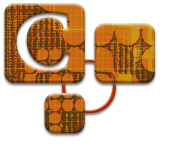|
 Topic
C2: Importance Of Knowing A Term's Definition Topic
C2: Importance Of Knowing A Term's Definition
Introduction
Why is it important to know all of
the terms used in a textbook?
What happens when a term's definition is
not known?
Why is it important to know the definition of
all of the terms used in a textbook?
To demonstrate what happens when you do not know the meaning
of a term used in a textbook, a definition will be given from a textbook
used to train travel agents. Notice how the term “breakage” is
used in the statement.
Package is the
number of services such as room, food, transportation, and entertainment
usually purchased separately but put together and marketed at a reduced
price made possible by volume and breakage.
After reading this statement, you wonder how “breakage” could
reduce the price of a package developed by a travel agent. In your mind
breakage means to make something unusable.
If something is made unusable by a tour group, it is logical
that the price of a tour package would be increased to cover this cost.
However, in the travel industry breakage is defined as
the financial gain to a hotel when meals or other services included in
a package are not used by the guests.
Now the reason why breakage can reduce the price of a
travel package becomes clear. People are paying for something they are
not using. The definition of package you have now in your mind is as
follows:
Package is the
number of services such as room, food, transportation, and entertainment
usually purchased separately but put together and marketed at a reduced
price made possible by volume and the financial gain to a hotel when
meals or other services included in a package are not used by the
guests.
By learning the definition of breakage, you can now understand
and learn the definition of package. When the terms "package" and "breakage" are
later used in this textbook for travel agents, knowing these definitions
will permit understanding the new information found in the textbook.
It is important that students always learn the definition
of all of the terms used in all of the new definitions that are introduced
in your class. Without knowing the definition of a term used in
a new term’s definition, the new term’s meaning will not
be understood and therefore be useless information.
What happens if a familiar term's meaning is not
known?
Frequently, a familiar term is used without anyone knowing
the term's definition. Because a certain term is used frequently, you
must never think that everyone knows the term’s definition.
An example of a familiar term used frequently is the term “candy.” Everyone
has no trouble recognizing a piece of candy. Everyone probably has eaten
candy.
However, you probably cannot define the term candy. In
other words you cannot answer the question, "What is candy?" Think
about this for a moment before continuing.
After reading the following list of associations of candy
manufactures, you will know what is candy.
ASSOCIATIONS OF CANDY MANUFACTURES
1. National Confectioners Association
2. Retail Confectioners International
3. Pennsylvania Manufactures Confectioner's Association
4. Confectionery Manufactures Association Of Canada
5. Confectionery Manufactures Association of Australia
6. Brazilian Chocolate, Cocoa and Confectionery Association
7. Association Of The Chocolate, Biscuit, And Confectionery Industries Of
The European Union
TRADE JOURNALS
1. Confectioner Magazine
2. The Manufacturing Confectioner
3. U.S. Market For Confectionery Product
As you can see, the term "confection" is widely
used by candy manufactures. If you want to see how widely this term
is used, enter "confection" on the Internet and see how many
sites are found (Thousands).
Now you know that candy is classified as a confection. Knowing
candy is a confection does not help you know what is candy unless you
know the definition of confection.
The definition of confection is as follows:
Confection is anything prepared
by mixing or combining
Now you know candy is prepared by mixing or combining
something. While the definition of candy is now starting to become obvious,
it was not obvious until the definition of confection, "prepare
by mixing or combining," was given.
However, many things can be mixed together to make a product.
Cement is a mixture of concrete, water, and sand. What is needed
now is knowing what is mixed together to make candy. Candy's ingredients
are sweet syrup or sugar, fruit, nuts, flavoring, or chocolate. Candy
can now be defined as follows:
Candy is a confection of syrup,
fruit, nuts, flavoring, or chocolate.
Term Being Defined: Candy
Classification: Confection - mixture
Identifying Characteristics: - one or more of the
following:
1. sweet syrup or sugar
2. fruit
3. nuts
4. flavoring
5. chocolate
The definition of candy became obvious once it was given.
Knowing the definition of candy now gives you a better understanding
of exactly what is the mixture that is called candy.
There are many terms students will use daily that he or
she is not able to define. If a student does not know the meaning
of a term used in a definition, the student cannot use the definition
to recognize an example of the term or understand information that uses
the term.
Therefore, the students must be taught how to learn the
definition and recognize examples of the terms introduced in their courses.
| Teaching
Suggestions |
When students are having difficulty
understand a concept or rule, determine if this problem is due
to not knowing the definition of some of the terms used.
Ask the students to define terms used in the concept or rule.
Emphasize the consequences of not learning the new terms when
they are introduced in the textbook or lecture.
Ask the students what will happen to someone who tries to learn
the information in chapter two who does not know the definitions
of the terms introduced in chapter one.
|

TOP
|